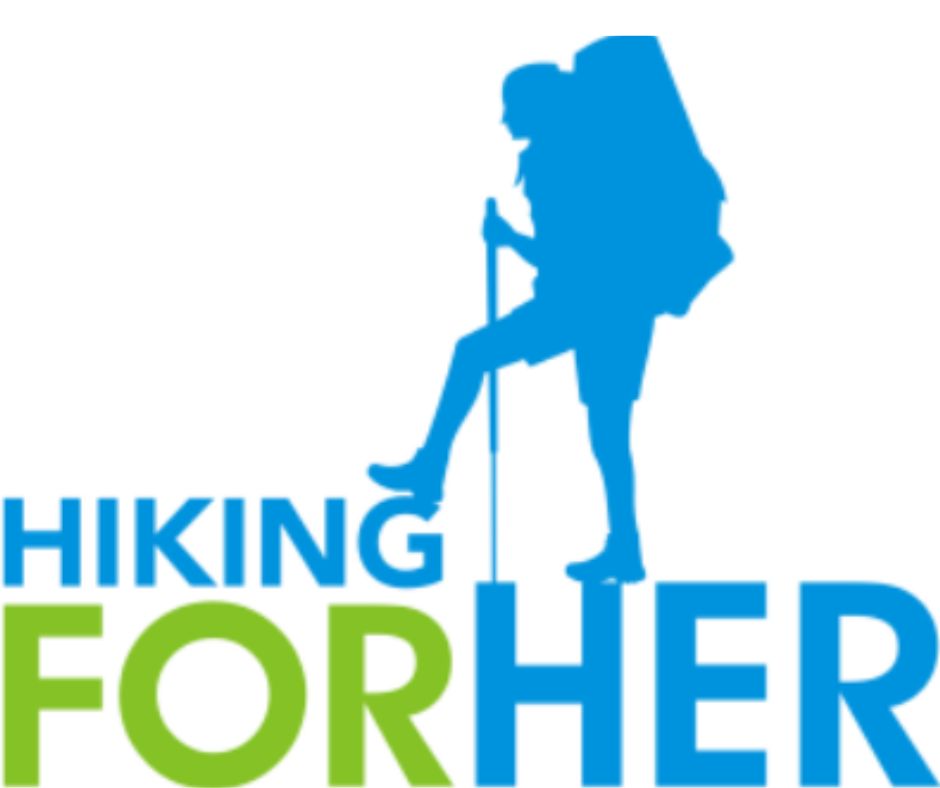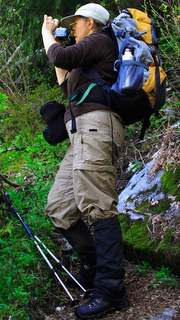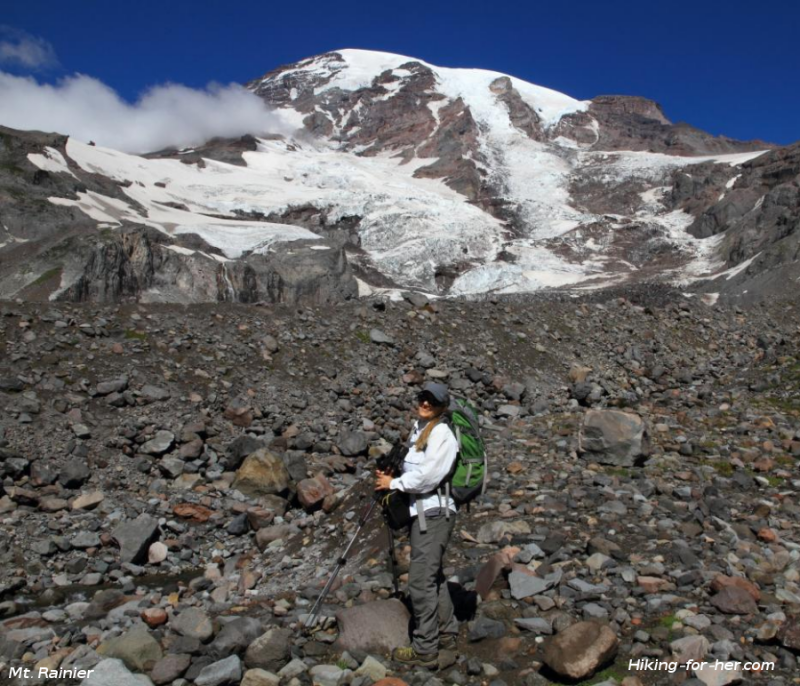Enjoy Happy Trails, the free monthly newsletter from Hiking For Her
Receive a free resource: "Hiking Layering System Explained"
Walking the Camino de Santiago: Information For Hikers
Walking the Camino de Santiago - ever wonder what it might be like?
If you've got even a passing interest in walking (hiking) The Way, this guest post will get you started with planning your trip.
Gwen Van Velsor not only walked it, but wrote a memoir about her time on the Camino called Follow That Arrow.
Her title refers to the yellow arrows which mark the route along the Camino.
Before we dive into her tips and tricks for walking the Camino de Santiago, a disclosure note:
- This guest post was written entirely by Gwen Van Velsor. No affiliate relationship exists between Gwen and Hiking For Her.
- These tips and tricks for walking the Camino de Santiago are provided solely for informational purposes. Your experience will be much different.
What is the Camino de Santiago?
The Camino de Santiago (The Way of St. James) is a pilgrimage across Spain that has been tread for thousands of years.
It has gained popularity in recent years, therefore the most common route, the Camino Frances (The French Way) has attracted millions of pilgrims from all over the world.
As a veteran of the 500 mile trek, I can assure you that the crowds can be avoided and this hike can prove to be one of the most rewarding in the world.
 Photo courtesy of Gwen Van Velsor
Photo courtesy of Gwen Van VelsorThe basics of walking the
Camino de Santiago
The Camino Frances is not the only route.
I hiked the Camino del Norte and the Camino Primitivo, which follows the northern coastline, dropping down into the mountains of Galicia.
There are many other routes to consider (too many to discuss here), and starting points can be selected from almost any point in Europe.
If you are wanting to escape the crowded Camino Frances, there are many opportunities to do so.
- More information about routes here.
The Camino is not a backpacking trip in the traditional sense. Unlike the Appalachian Trail or the Pacific Crest Trail, you will not be camping out (unless you choose to, more on that later), or carrying heavy loads of food and water.
The Camino has a system of albergues (hostel-like accommodations) set up specifically for pilgrims that are either by donation or very little cost.
- These are found even on very uncommon routes.
- If it's privacy you need, that can be found, too (more on that below).
The level of hiking difficulty is not high. Depending on the route you take, there are very few days of technically difficult walking.
I witnessed all walks of life on the trail, from children to the elderly.
- Do not let or physical fitness stop you from walking (more below).
You do not need to quit your job and sell everything to walk the Camino.
Pilgrims come to hike anywhere from several months to several days.
If you are hearing the call to go to Spain, don't let the amount of time stop you. There is no "minimum" amount you need to walk (unless you want a Compostela, in which case you must walk a minimum of 100 km.
- FAQ resource here
Packing and planning advice
Pack light.
Remember, you can buy anything in Spain that you would get at home, so start with the basics and if you need something extra, just pick iti up along the way.
Hiking For Her has great tips on packing light here.
My packing list included:
- lightweight sleeping bag
- one set of hiking clothes
- one set of "city" clothes
- jacket
- walking shoes
- "city" shoes
- toiletries (including a few first aid items)
- camera
- snacks
- water
Be prepared.
While walking the Camino de Santiago, I averaged 25 km per day (sometimes up to 35).
It would be a good idea to train some before heading out so that you are not blindsided by blisters.
Be sure to train in the shoes you plan to bring so that you can break them in and see if any adjustments need to be made before you leave.
Good shoes are the most important item you will pack!
Don't plan too much.
This includes route planning.
If you have every day planned (where you will stop, how long you will walk) you could miss out on those unexpected opportunities.
Be open to the unknown. And don't worry, there are an absolute abundance of places to stay and eat. You will not be left out in the cold.
Bring a guidebook.
That being said, I found it helpful and comforting to bring a guidebook.
They show the distance between each town, where the accommodations are, and provide interesting tidbits about the history.
Again, there are more guidebooks than can be listed here, but this is a good place to start.
I did meet people who walked without a guidebook and did just fine!
Physical assistance
If you find that you are unable to shoulder a pack, there are several services that will pick up and drop off your bag from point to point.
This of course is an added cost and may limit your flexibility, but is a wonderful option for those that need physical assistance to walk The Way.
Walking the Camino de Santiago solo
Yes! You can walk the Camino alone.
I did, and met many other women doing the same.
You will (almost) never walk alone, and meet lots and lots of friends along the way.
Don't wait for that friend or partner back home to join you, just go!
 Photo courtesy of Gwen Van Velsor
Photo courtesy of Gwen Van VelsorAccommodations
along The Way
Most pilgrims stay in hostels known as albergues.
These are large bunk style accommodations with shared bathrooms and kitchens.
They range from donation based to 15 Euro maximum per night.
Some are nicer than others (they get worse the closer to Santiago you get), but for the most part are comfortable if you don't mind sleeping among masses of snoring pilgrims.
It is a great opportunity for fellowship with others, one of the most valuable parts of the experience.
If you require more privacy, you will find in nearly every town an option for a guest house, pension, hotel or the like.
Prices range from about 20 - 80 Euro per night depending on type of accommodation.
If you are on one of the lesser travelled routes (the Camino Primitivo, for example) you may want to do some research ahead of time to make sure there are places to stay in the towns you wish to stop in.
- This is where a guide book comes in handy!
Camping is not out of the question, but there are a few things to consider.
Most of the time, you will be walking through towns or privately owned farmland. This means you (technically) need permission to camp out.
I did meet people who were doing this without too much trouble.
If you are a female walking alone, I wouldn't really recommend this option since your tent will not exactly be hidden in the woods.
But I wouldn't deem it unsafe, either.
Consider too that camping means a much heavier pack (tent, mat, possibly cooking gear).
What to eat while walking
the Camino de Santiago
You will learn quickly not to carry a lot of food with you since it makes your pack unnecessarily heavy.
You will need to grab some snacks and/or breakfast the day before, as shops open mid-morning and you will likely hit the trail before they open.
I liked to carry nuts, fruit, cheese and bread for breakfast and snacks.
Food is very, very affordable in Spain.
- A typical self-catered lunch of bread, meat and/or cheese, and fruit is 3 Euro or less.
- A typical (huge) lunch at a restaurant or bar is 8 -12 Euro.
When you see a "Pilgrim's Meal" advertised at a restaurant, skip it.
Opt instead for the similarly priced, and much better, "menu del dia" which comes with three courses, wine and bread. This is available mid-day at every restaurant when Spain eats its big meal of the day.
Dinner options (not usually served until 9pm) are much more limited, so you will find self-catering to be much easier for dinner since you will likely be headed to bed early after a long day of walking.
So what's the big deal
about walking the
Camino de Santiago?
Why are so many people heading to Spain to walk the Camino?
Well for one thing, it's a pretty special place. Spain is a beautiful country with very diverse regions, perfect for exploring by foot.
There is nothing quite like the magic and camaraderie you feel when walking a pilgrimage.
The simple daily tasks of walking, eating, and finding a place to stay have a way of clearing your mind and distilling life to its essence.
While the trail is historically a religious one, people come to walk for all sorts of reasons, so don't let that stop you.
To read more about my experience on the Camino, pick up a copy of my book, Follow That Arrow.
Thanks, Gwen!
As you've just read, walking the Camino de Santiago isn't for every hiker.
If you like solitude and wilderness, consider a backcountry hiking trip instead.
But if you seek the opportunity to explore a beautiful region of the world on an established route (just follow the arrows!), and are eager to meet hikers who look at the world differently than you do, it's time to consider walking the Camino de Santiago.
Use Gwen's tips and links to get started with your plans.
And if you have a comment or suggestion, or your own Camino story, use this CONTACT link.
- I'd love to share your photos of your time on the Camino here.
Walking the Camino de Santiago




